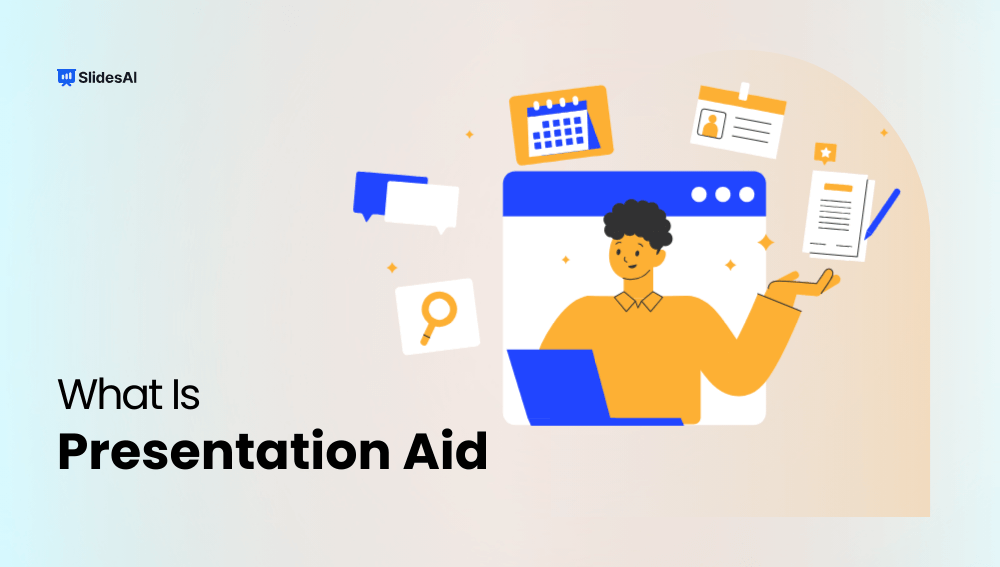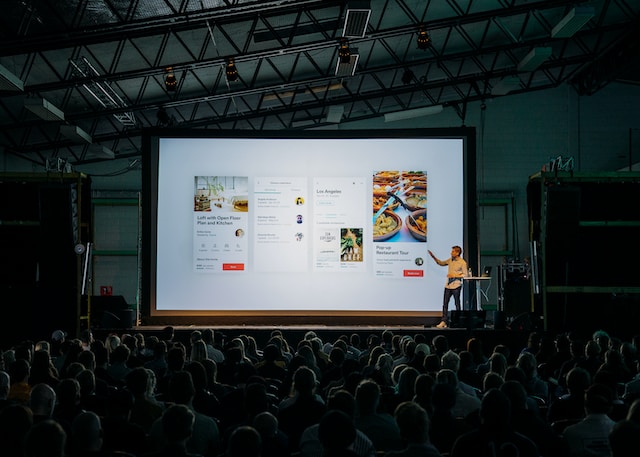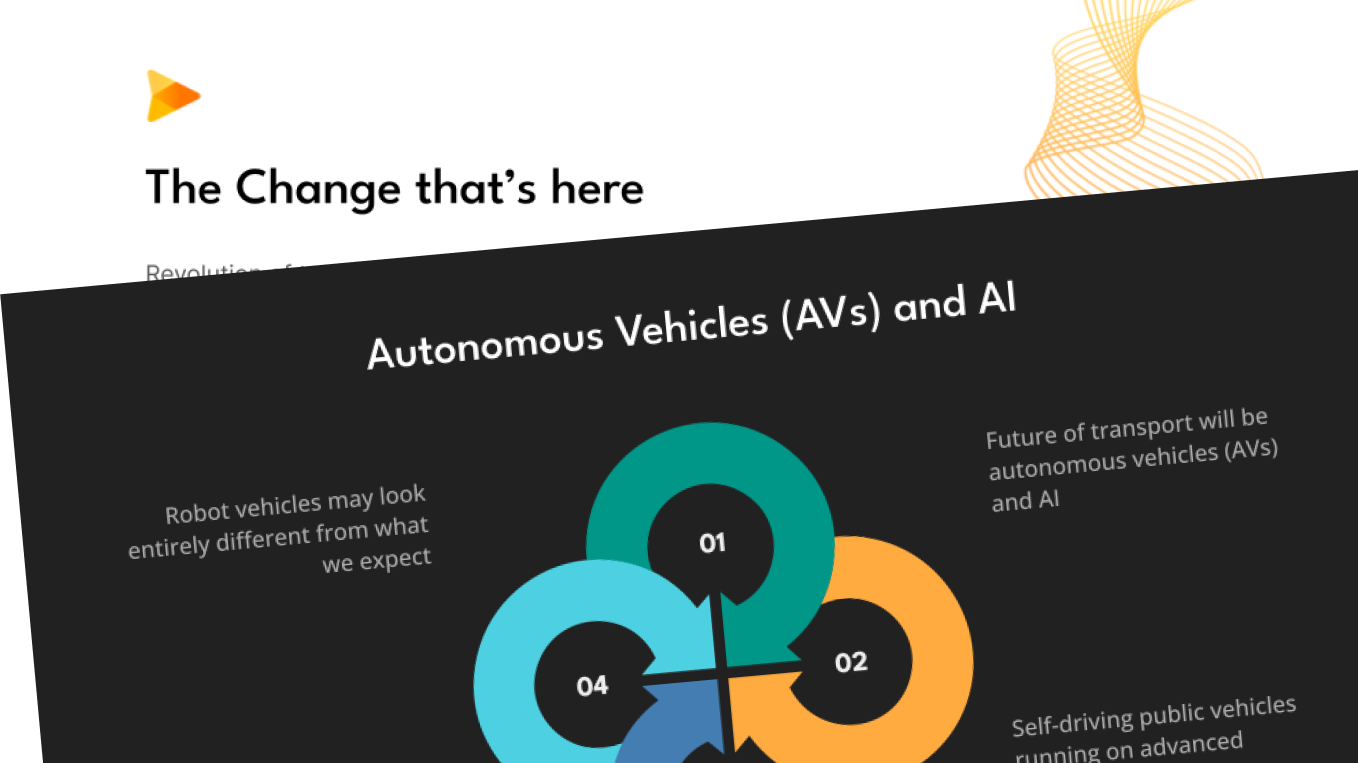What Are Presentation Aids?
Presentation aids are tools that speakers use alongside their words and delivery to help get their message across to the audience more clearly. These tools come in many forms. The most common ones are visual aids, like pictures, diagrams, charts, and maps. Speakers can also use sound effects, music snippets, or even spoken word clips to enhance their presentations.
In some cases, presenters might even use things you can smell or taste, or even real objects, animals, or even people! Presentations can even involve showing things happening over time, like a demonstration.
There are all sorts of things you can use to help your presentation! But the key thing to remember is that whatever you choose, it should be clear and easy to understand, and directly related to something you’re talking about.
Benefits of Presentation Aids
- Helps Keep Your Audience Interested: Presentation aids can add variety and make your presentation more engaging for the audience.
- Makes Complex Ideas Easier to Understand: Visuals can help break down complex information into simpler pieces, making it easier for everyone to follow.
- Reminds People of the Important Points: Presentation aids can highlight key messages, helping the audience remember them later.
- Improves How Well People Remember Your Presentation: Using visuals can help people retain information better than just hearing it alone.
- Gives Your Presentation a Polished Look: Presentation aids can make your presentation appear more professional.
Create presentation slides with AI in Seconds in Google Slides
15M+Installs
Works with Google Slides
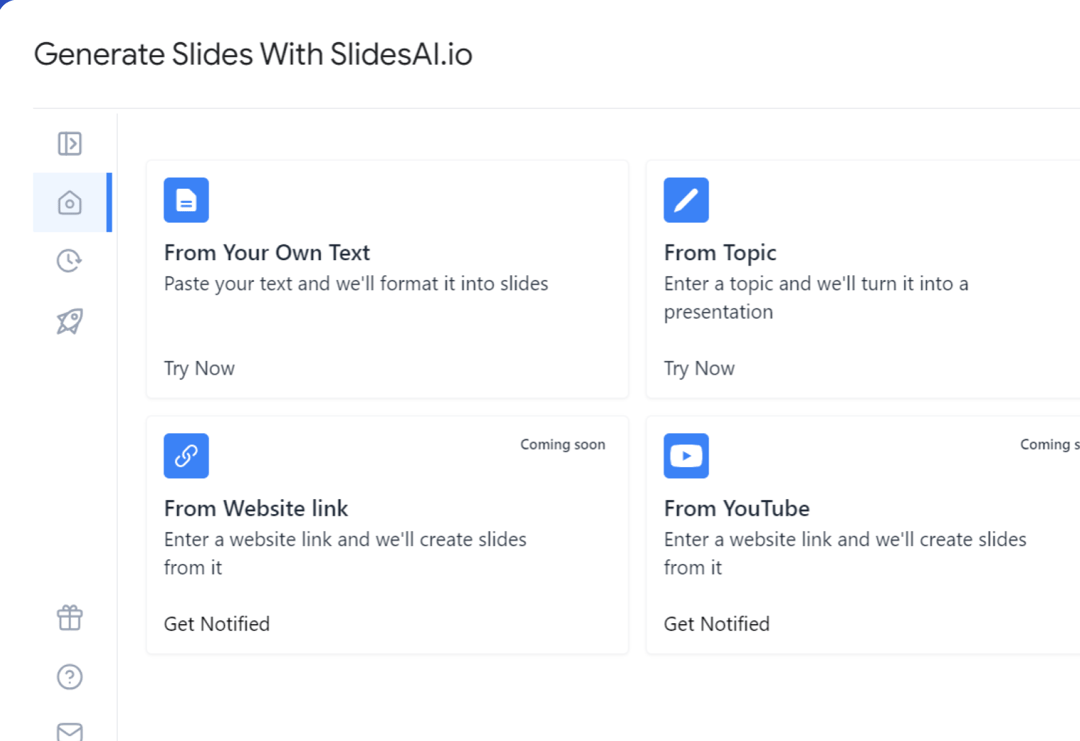
Types of Presentation Aids to Lift Your Presentations
1. Slides (PowerPoint Presentation / Google Slides)
These digital presentations are a common way to share information. They help you organize your thoughts, include visuals, and guide your audience through your topic. With features like transitions and animations, you can create presentations that are clear and engaging.
2. Visuals (Audio & Video)
Don’t just stick to text! Adding sound effects, music, or short video clips can make your presentation more interesting. Just make sure they directly relate to your message and don’t distract your audience.
3. Images
Great pictures can grab attention and help explain your points. Use photos, illustrations, or infographics to visually represent complex ideas or data. Choose images that are easy to understand, relevant to your topic, and look good overall.
4. Charts & Graphs
Charts and graphs are a helpful way to show data in a clear and simple way. Use bar graphs for comparisons, pie charts for breakdowns, and line graphs to show trends over time. Make sure your charts are easy to understand and have clear labels and titles.
5. Diagrams
Diagrams are a good way to show processes, systems, or connections. Use flowcharts to map out workflows, or use diagrams like anatomical models to explain scientific concepts. Diagrams should be easy to follow and look good visually to help people understand them.
6. Maps
Maps can be valuable if your presentation involves locations or geographical data. Use them to highlight demographics, track movement patterns, or show the reach of your business.
7. Handouts
Give your audience something to take away with them. Handouts can summarize key points, offer additional resources, or include website addresses for them to explore further.
8. Live Demos
Doing something live can be a great way to engage your audience and help them learn more. You can demonstrate a product, conduct a science experiment, or perform a task live to bring your presentation to life.
Create presentation slides with AI in Seconds in Google Slides
- No design skills required
- 3 presentations/month free
- Don’t need to learn a new software
Works with Google Slides
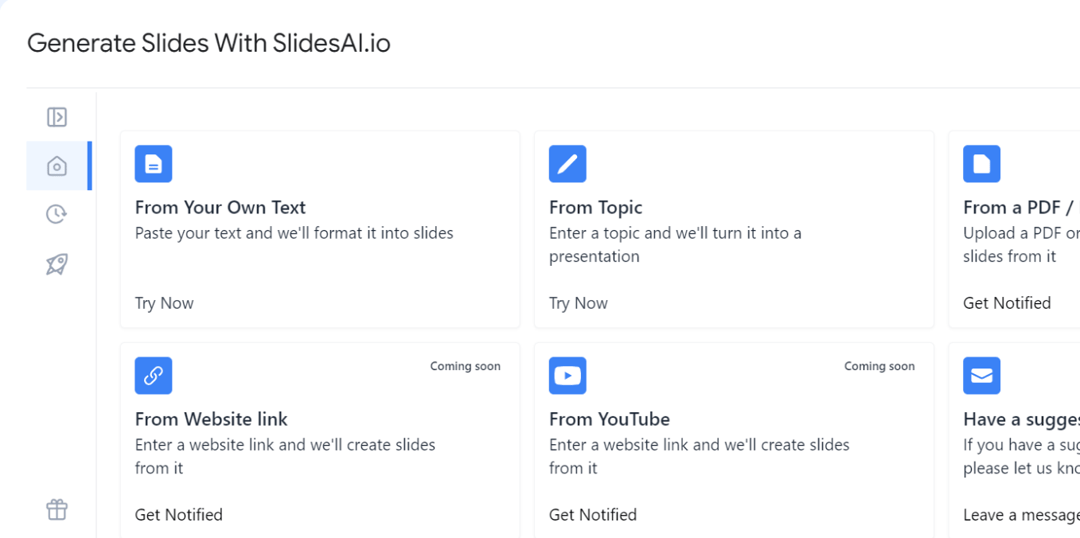
Presentation Aid Tips for Success
- Grab Attention: Ask questions to keep your audience engaged.
- Easy on the Eyes: Use contrasting colors for better readability.
- Connect with Your Audience: Make eye contact to build rapport.
- Be Prepared: Practice your presentation beforehand.
- Clear Titles: Use headings on each slide to guide your audience.
- Speak to Your Audience: Don’t just read from the slides, explain the key points.
- Simple Language: Use clear and concise language for easy understanding.
- Talk About the Slides: Make sure your narration connects to the visuals.
- Project Your Voice: Speak loudly enough for everyone to hear.
- Less is More: Keep your slides simple with minimal text and clear pictures.
- Repetition is Key: Repeat important points to leave a lasting impression.
- Font Matters: Choose easy-to-read fonts and keep them consistent.
Closing Thoughts
Presentation aids are powerful tools that can elevate your presentations from informative to truly impactful. By using a variety of aids strategically and keeping your audience in mind, you can transform complex ideas into clear and engaging experiences. So, next time you have a presentation to deliver, remember these tips and presentation aids to lift your presentation and leave a lasting impression on your audience.
Frequently Asked Questions
Do I always need presentation aids?
Not necessarily! While aids can greatly enhance your message and audience engagement, they’re not always essential. Focus on delivering a clear and concise presentation, and add visuals only if they support your points.
What’s the biggest mistake people make with presentation aids?
Overloading your slides with too much text or using confusing visuals that distract from your message. Remember, your visuals should complement your speech, not replace it.
How can I make sure my presentation aids are effective?
- Keep it simple and focused: Use clear, high-quality visuals with minimal text.
- Practice beforehand: Get comfortable using your aids smoothly alongside your speech.
- Align with goals: Ensure your visuals directly support your presentation’s key points.
What’s the one thing a presentation aid should never do?
Distract from your message! Visuals should enhance understanding, not pull your audience’s attention away from your main points.
When using visuals, how should I speak?
- Speak slowly and clearly: Give your audience time to process both the visuals and your words.
- Maintain eye contact: Connect with your audience, not just the screen.
- Use simple visuals: Complex visuals can be confusing, so keep them clear and easy to understand.
How can presentation aids help me feel less nervous?
By providing structure and focus, presentation aids can boost your confidence. Having visuals can also help guide your speech, reducing the chance of getting lost or forgetting your points.
